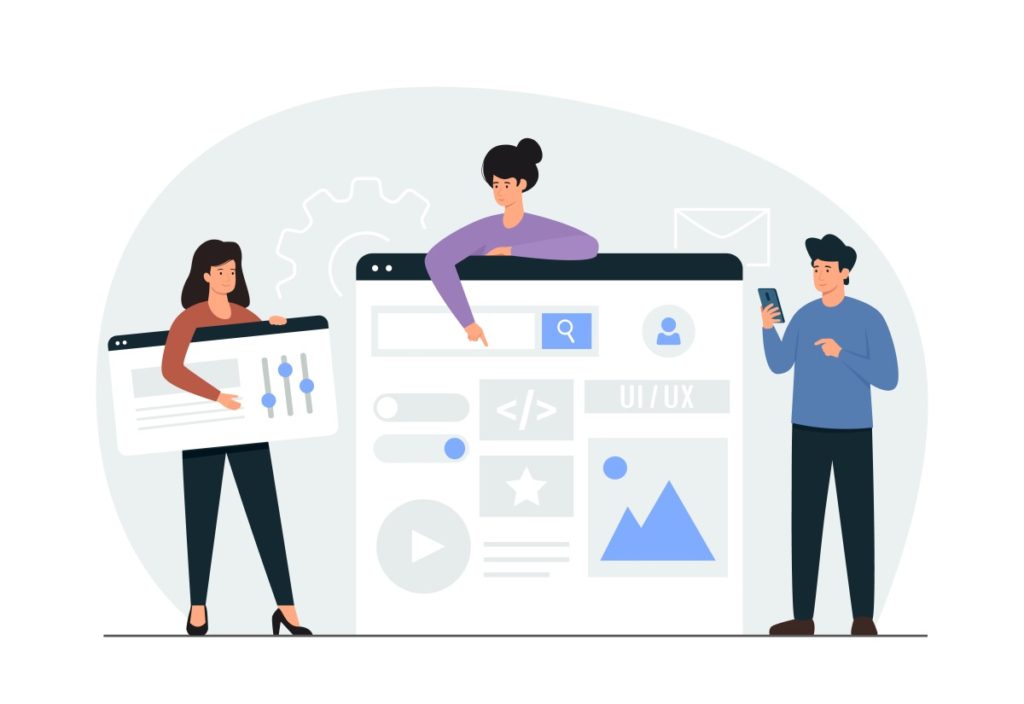Remove friction and convert more visitors to your website into customers by following these best practices for achieving an exceptionally seamless user experience.

Building an appealing website is a solid step in attracting potential customers, but there are others. A good user experience, also called UX, will keep website visitors engaged and help them find what they need on your site.
Eighty-eight per cent of online shoppers won’t return to a site where they’ve had a bad user experience, with slow-loading websites alone costing business owners US$6.8 billion per year, according to statistics gathered by Zippia.
When users hit obstacles navigating your website, you can lose customers — so understanding user flow is critical.

What is user flow?
User flow is the steps users take from the start to the end of their journey on your website or app. No matter what their goals, successfully leading these users to the outcomes they are seeking is vital to nurturing their relationships with your business.
For example, someone discovering your company for the first time might land on your home page or arrive via a link to a blog post or other compelling resource. You should ensure you offer the guidance they may need to learn more about your company, understand what types of products you sell or problems you solve and how they can learn more about you.
Another user may be familiar with your company and land on your products page but need a seamless journey through making a product selection, adding the desired item to their cart and successfully purchasing it.
Why user flow and user experience matter in digital design
If customer pathways are unclear, users may land on one of your web pages and leave without exploring further. Others may shop in your products section and add items to their cart only to abandon it and leave your site without making a purchase.
Whenever users encounter friction or obstacles to navigating your website, they form an impression of your company that can influence their buying decisions.
If you ignore user flow, you might attribute this to your website copy, product selection or pricing. But what if the real reason is unclear navigation that fails to guide users through the steps they need to take?
Identifying these challenges can help you fine-tune your strategies to convert more users to satisfied customers and ensure you invest resources wisely.
Consider these questions:
- What does each user hope to accomplish by visiting your site?
- What additional information would be helpful during their website visit?
- What might cause your user to hesitate or abandon their intentions?
Visualizing the user’s path and decision-making as they navigate your website can provide a guide for page content, layout, directional choices — such as buttons to click — and links to other website pages.
Some companies will create user flow diagrams to illustrate how different users may use their website or app to help flag areas where people stop moving forward.
Benefits of a seamless user experience
As you refine how users enter your site and navigate toward meeting a goal or making a purchase, you will remove obstacles that may have halted their progress. Each time you do so, you help a user move closer to becoming a paying customer or loyal consumer of your content.
Enhancing user flow on your site can produce these rewards:
- Improved user satisfaction and engagement.
- Increased conversion rates.
- Longer or repeat visits.
- Reduced frustration for users.
- Improved brand reputation.
- A competitive advantage in the market.
Best practices for creating a smooth user flow
By following a few best practices, you can guide users to effectively navigate your content, making it more likely they will become customers or take another desired action.
1. Create user personas
Imagining how people use your website is easier when you take the time to illustrate each type of user with a user persona. Create a fictional user profile representing your target audience. You’ll want to create a few user personas if you have several target audiences.
These personas can help illustrate what you know about these customer types, from demographics to needs and preferences. Building out these profiles can help everyone on your team understand how to best design customer journeys that are helpful to real users.
2. Map out various customer journeys
Once you have your user personas created, consider each user’s journey when interacting with your product. This includes their motivations for visiting your website, how they found it and their actions once they discover it.
Identify each user’s steps to solve their problem or complete their desired action. Next, map a clear pathway from where they might land on your site to the final interaction, such as a purchase or newsletter sign-up. Consider if they have all the information they need at that stage. If not, find ways to provide it through strategically placed links and directions.
3. Update navigation to smooth user flow
As you get comfortable with user personas and journey mapping, you’ll find that you more quickly identify barriers that could prevent your users from successfully finding what they need or becoming a customer of your company.
You may realize that some website pages don’t effectively direct users to the next step, while others may need links to helpful information supporting their decision-making. Sometimes, you may need to amplify or add more straightforward buttons that help users move forward. Slow loading pages might halt an enthusiastic buyer and drive them away.
4. Add personalization to tailor the user experience
Digital design elements can direct users to the correct pages on your website or help them complete a purchase. They can also help you personalize the user experience.
Explore ways to customize how users experience your site so that as they navigate through your content, you present them with choices that align with where they are in the buyer journey. This personalization may include recommendations, special offers or targeted information.
5. Test user flow
As with any other design approach, testing your theories about user flow and customer journeys is imperative. You can monitor your analytics to understand where and how users move through your website and review for differences before and after you make changes.
It’s wise to test different versions of your decisions to see which is most effective before making assumptions. (Try A/B testing, in which you only change one variable, to ensure you pull the right insights from your test.)
Challenges in understanding user flow
Even following best practices for achieving an exceptionally seamless user experience doesn’t guarantee that every user will convert to a paying customer. Watch out for assumptions or stagnancy that could negatively impact user flow.
Avoid these missteps when mapping user flow:
- Neglecting to do user research when creating user personas.
- Overloading users with information too early in their journey.
- Ignoring mobile users who may have very different user flows than desktop users.
- Not providing clear messaging after users do take action to help reinforce their choices.
- Forgetting to update and refine design choices over time to meet user expectations.
Understanding how to create straightforward pathways for users to land on your website and complete their desired tasks can help you support them in successfully doing so more often.
Want to be sure your digital design offers a seamless user experience? Book a consultation with a Postmedia expert to learn more.

